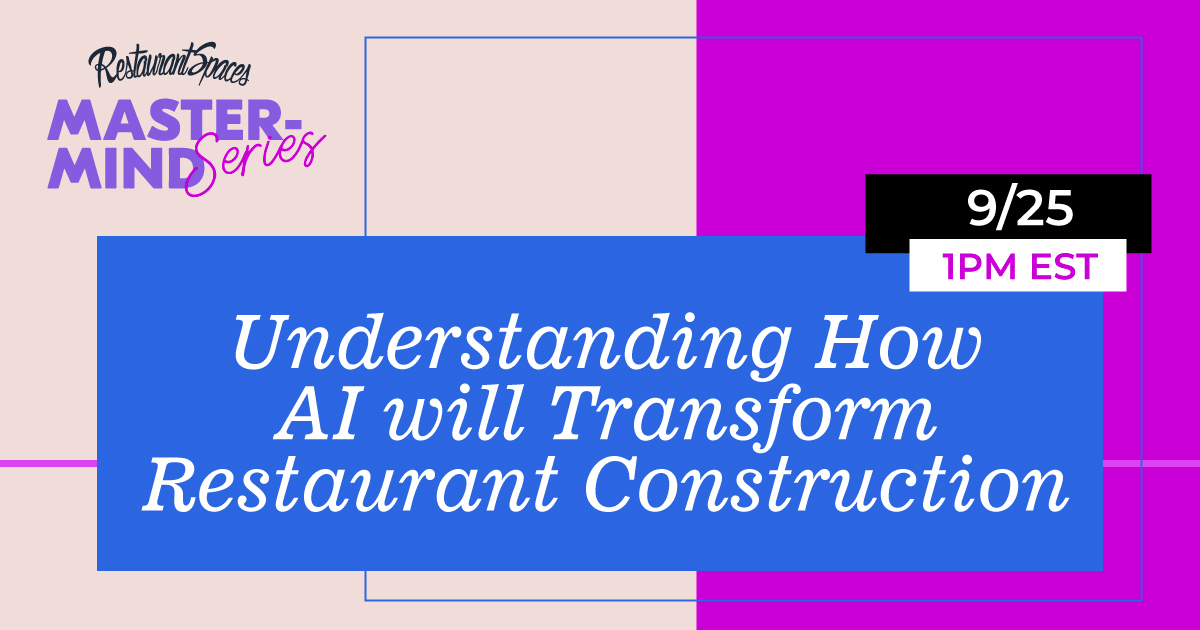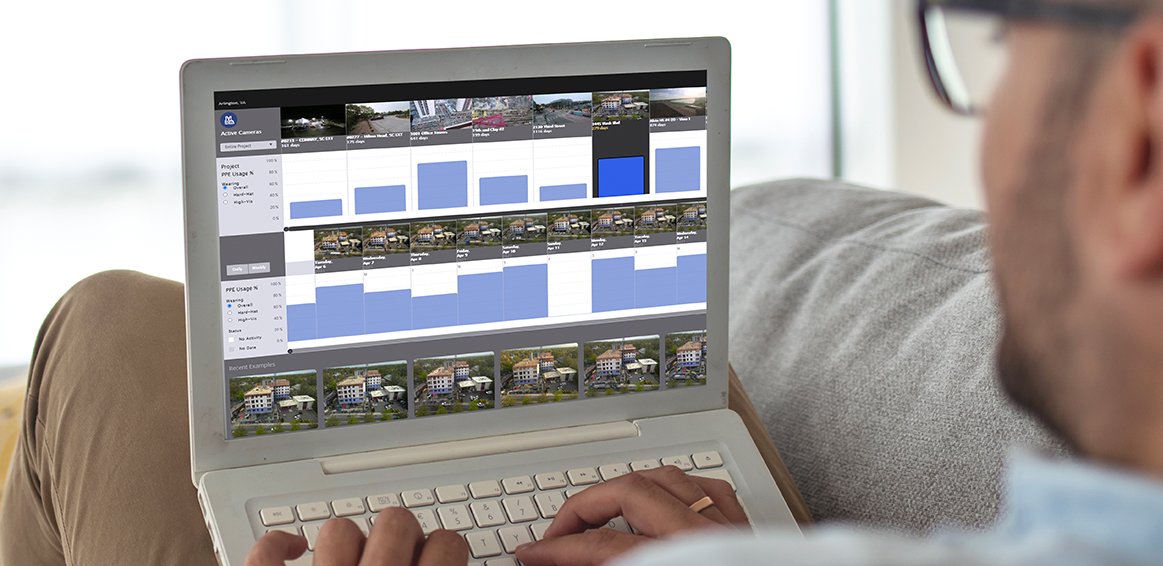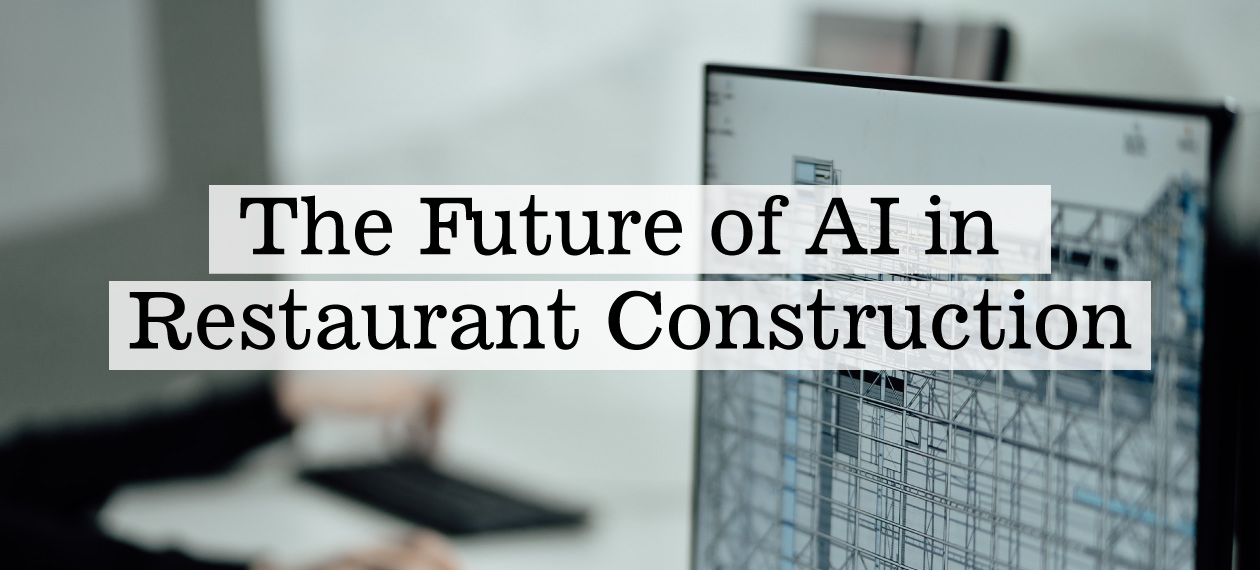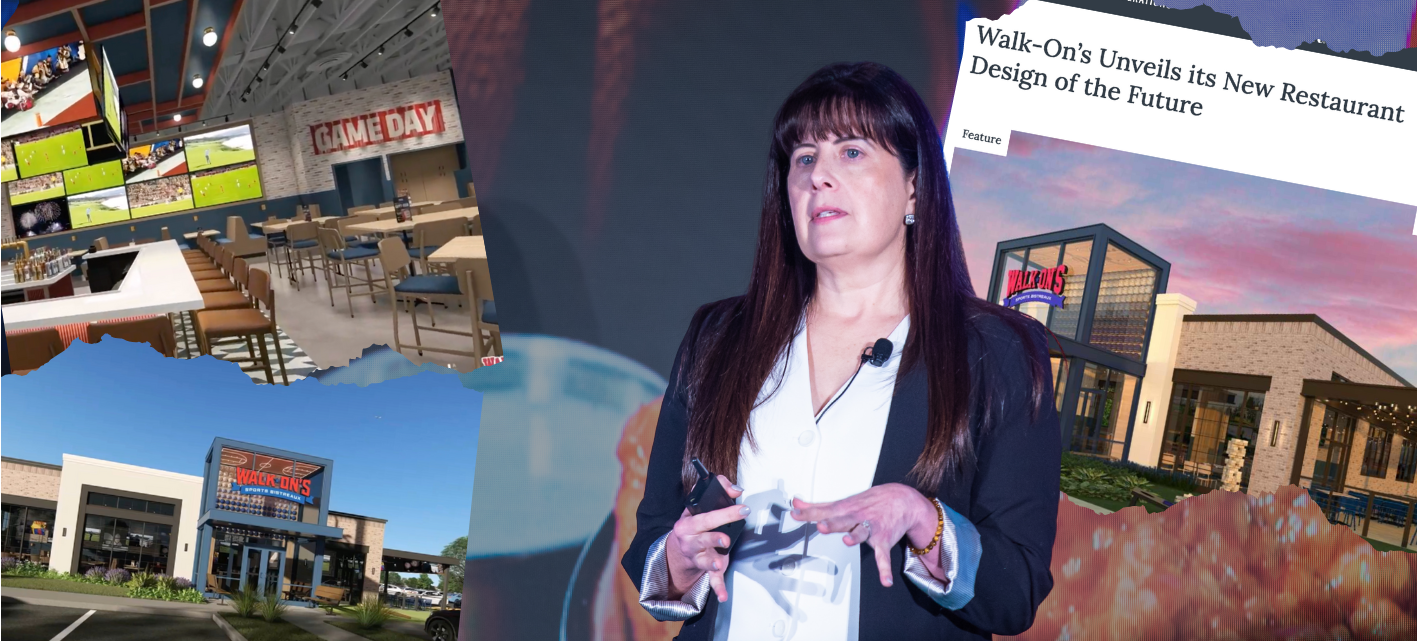The old axiom that time is money rarely rings as true as it does in restaurant development. As if ever-increasing construction costs weren’t enough, managers have to juggle no-room-for-error budgets and inflexible schedules across dozens of projects. At a large enough scale, it’s simply too much for any person to handle. Fortunately, people no longer have to handle it alone.
Consider OxBlue. A few weeks into the pandemic, the camera systems provider rolled out artificial intelligence tools to help its customers detect social distancing on job sites. Having successfully demonstrated AI’s power to save time (and money) monitoring safety protocols, OxBlue continues to build on these capabilities with powerful AI tools designed to streamline construction projects at every step of the process.
We sat down with OxBlue Director of Operations Anthony Butler to discuss how AI can transform restaurant construction. Enforcing safety standards, tracking equipment usage, optimizing workflows—these are just the tip of the iceberg, as Butler tells us. In addition to outlining the technology’s current advantages and challenges, he also forecasts what AI will look like a few years down the line, making a compelling case for stakeholders to invest now.
So, what the hell is artificial intelligence (AI), and what solutions can it provide in construction?
Butler: The most popular application for AI is data gathering at scale. That's what it's useful for. All the applications that we are using AI for, we could hire a huge team of people to go through these images one by one, but we've got thousands of cameras, we're taking almost 200 images per camera per day. You look at the sheer numbers and that's just a lot to handle operationally. I'm not talking about what Google or AWS is doing, which is cutting-edge and insane. But in terms of your typical restaurant construction project, it's about extracting information from large amounts of data.
Tell us where the technology is right now with regard to restaurant development. What challenges in project management can this tech solve for and how have you and your partners been using it so far?
Butler: We see our clients using it to more effectively manage their job sites. Oftentimes they're using it for objective data. When they hear something from either a project manager of theirs or the GC or anybody involved with the project that differs from what they'd like to hear… they like having data they can go to and use conclusively to say, "Hey, there's no reason to push the schedule back seven days. You haven't been getting a bunch of rain on the job site, and you've mostly been working 10:00 AM to 2:00 PM."
This was an example one of our clients shared with us. They went back to a GC who was trying to add on an extra two weeks to the schedule. The point he made is they should've been working eight-hour days. That's how our clients are seeing activity analysis being really helpful for them — to be able to have objective data to respond back to a conversation. 
Tracking safety compliance across projects
On the safety side, they use it much more to make sure the culture is right. Safety on a job site is really a cultural foundation — the culture dictates the number of incidents. And so for them, they're really using it to determine which of their GCs they need to follow up with for safety reinforcement. In general, they expect the GC to own the safety on a project, but they find it a really useful tool to be able to say to a GC, "You guys are doing a great job. We really appreciate how you're keeping your sites safe and making sure everybody's in compliance." Alternatively, you might say to another: "You guys need to get your act together and have stronger safety standards on the site because we know if something happens, that's bad for everybody involved."
What are the shortfalls of AI right now? How do you see the tech improving?
Butler: One of the things we're working on, and one of the things a lot of people are working on with AI, is getting to where you're actually able to generate intelligence from it — where it's able to detect patterns or insights that people just can't. And almost always the sheer variety of data that you have makes it hard to see the forest because of the trees.
In general, with smaller amounts of data, people are always better at understanding context. That's something that AI just cannot touch when it comes to our ability to contextually identify what's happening. An AI just sees something, and it's like "Here!" It doesn't have the ability to say, "Well, that's probably caused by this happening previously, and now we can expect this to happen next." In the next two, three, four years, those applications might become really common.

Is the technology customizable? Can you think of any examples where AI might be utilized for a specific need?
Butler: Depends on the application. One example that we did early in the days of COVID hitting is we were able to get a basic social distancing algorithm. The machine was able to project and bring to attention examples where people weren't socially distancing.
Another example is cranes. We've been working on cranes for 12 months now. If you rent one on the job site, it is incredibly expensive and you want it moving every time there's work happening. Because if it's not moving, that means you're not making progress and you're spending a lot of money having it there. So cranes are something that we've heard from clients is really important to them to be able to monitor and make sure that it's being used efficiently. The AI struggles with that particular technology because there are so many other things that look like cranes to it, like scaffolding on a job site. These are technical challenges that we're still working on solving. So it really depends.
Let’s fast-forward to five years from now. How do you imagine someone in restaurant development might be using this tech?
Butler: I think AI has the potential to put together a schedule for you, that you should be passing on to the general contractor, that's localized for permitting times in a particular city and reflecting the type of soil condition on the job site. It's able to take all this data and put together a better schedule. I think it's also going to be able to tell you more efficiently and effectively when things are going wrong. It’ll let you know when you need to start setting expectations that a project is going to open up a month later than you expected, or that you might be able to open it up a month earlier and start bringing in revenue. It can be used to assess the GCs that you hire and predict which of the GCs you're looking at in an area is going to be the best fit for your project. 
A lot of those are applications that we're looking at, but there's also a whole host of possibilities if you invested in apps on your phone or Bluetooth tracking devices to be able to put together comprehensive, detailed insights into what's actually happening at your job site. Delivering insights from that will help you better manage your business and more effectively deliver construction.
How much of an impact could this tech have on how development teams roll out their projects? For instance, could it reduce the number of people they might need in the long run? Or is it more just another tool that's going to give them way more insight and make their lives easier?
Butler: It's got the potential — I'm certainly not going to pretend to be some vision seer into the future, it’s hard to predict — but it absolutely has the potential to do all of that. It's easy to see that right now you might need one project manager for three projects, and how in the future, with AI augmentation, you can have one managing seven or eight projects. That's entirely feasible. Everything that you mentioned there is very much realistic.
There's a bit of uncertainty around AI, simply because it's still a developing technology. What concerns or pushback do you get from the industry?
Butler: For me, talking to those in the construction industry, it's really all over the spectrum. Construction as an adopter of new technology is not very cutting edge. I think it was a McKesson study that really placed construction as one of the industries that they expected to be slowest to adopt AI capabilities. You can really differentiate yourself if you're able to successfully adopt it and your competitors aren't.
But it's all over the place. There have been some people who've been like, "I don't need more people spying on me." We've been dealing with this since 2001 — people are like, "Why are you spying on me on this job site by taking pictures?” Usually what we find our clients like to say is, it just captures the truth. And as long as you're good with the truth, you should be good with what's coming out of this.
Where I see AI really creating value is saving time. Everything that we're generating and producing, our clients could do it themselves, but it would just take a lot of time to do. And time is incredibly valuable in today's world. So we're trying to save our clients time and let them focus on what's most important.
What do you say to people who are afraid that more AI means fewer jobs?
AI creates a lot of opportunities for humans to follow up, interpret, and act on what it brings to attention. "From this data, look at this event, this event, this event." In general, it's a very, very poor idea to have AI be able to execute action. Because even with the best AIs in the world, they still have major failure points.
You're still going to have stupid things that happen where an AI doesn't handle context correctly and makes a poor decision. It's one of those things that you do want to be very careful about letting AI do action. And that really creates an opportunity for people to step in and take actions based on the data.
The technology is still fledgling in terms of being applied to construction… though it is a rapidly evolving space. Why is it important for companies to start investing in it right now and how can they start experimenting to ensure they have some skin in the game into the future?
Butler: My sense is now is the time. Most likely what will happen is that you discover in the first year that you got bad data. You're going to wind up spending a lot of time figuring out how to have clean, reliable data that can be scraped, manipulated, and compared. So if you look at that as your first-year outcome of experimenting with AI, that's a foundational piece that you're going to have to do. And then the second year is starting to understand the practical applications.
With any technology, a lot of people fall in love with it because of the novelty. What's going to make this useful is value creation. How does it help solve problems? How does it make my life easier? How does it keep us from having a potentially dangerous accident? Or paying extra money that we shouldn't be paying? Or seeing project delays that are going to set back the financial budget for the organization? Those are the sort of things that it's going to take you a year to figure out how to practically apply to create value for an organization.
There’s a lot of foundational stuff that's open-source. Facebook, Google, AWS — they have a ton of open source applications where every single one of the people who show up at this if they wanted to, could take an image or an Excel spreadsheet and have an AI analysis of it by the end of the day. There's a bunch of open-source applications there. The technology, foundationally, is already there, it's accessible, and it's only going to rapidly improve over the next two years. So that's really going to be the sweet spot where you'll be able to create real value. You'll have the data in place and the technology will have matured to where it won't just be extracting data from very large amounts of data. In two years, you could be getting to the point of actually providing intelligence that can help you guide your business more effectively.
We have a roundtable discussion focused on this topic happening August 25th. Head here to reserve a spot. Space is limited.

Posted by
Chain Restaurants Reimagined.
The Retreat to Reimagine Restaurant Development, Design + Technology.
April 12-14, 2026 | Miami, FL






-3.png)
-4.png)
-3.png)


Comments